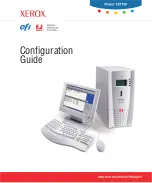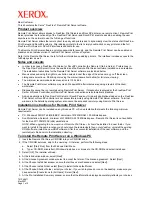
available by using the ATOM driver of the NTP subsystem, which is directly
interpreting the PPS (pulse per second) of the GPS reference clock. The default
configuration looks like this:
# *** lantime ***
# NTP.CONF for GPS167 with UNI ERLANGEN
server 127.127.1.0 # local clock
fudge 127.127.1.0 stratum 12 # local stratum
server 127.127.8.0 mode 135 prefer # GPS167 UNI Erlangen PPS
fudge 127.127.8.0 time1 0.0042 # relative to PPS
server 127.127.22.0 # ATOM (PPS)
fudge 127.127.22.0 flag3 1 # enable PPS API
enable stats
statsdir /var/log/
statistics loopstats
driftfile /etc/ntp.drift
# Edit /mnt/flash/ntpconf.add to add additional NTP parameters
By using the NTP configuration page, a number of additional parameters can be
added to this default ntp.conf. In the upper section up to five external NTP servers can
be set up to provide a high grade of redundancy for the internal reference clock. For
each of these external NTP servers the AUTOKEY or symmetric key feature of NTP
can be used to ensure the authentic of these time sources. The “Prefer“ flag can be set
for each external server. The internal refclock has set this flag by default. The
“Prefer“ flag is usefull if one of the refclocks are not available or out of sync.
The field “Stratum of local clock” is used to change the stratum level of the local
clock (see above), default is 12.
The “Local trusted key“ field holds a list of all trusted symmetric keys (comma or
space separated), which have to be accepted by the NTPD of your LANTIME.
If you want to use your LANTIME timeserver to send NTP broadcast packets to your
network, you have to enter a valid broadcast address in “NTP broadcast address”. If
you want to use IPv6 multicast mode, you have to enter a valid IPv6 multicast address
in this field. Please note that NTP Version 4, which is used by the LANTIME
timeserver, only permits authenticated broadcast mode. Therefore you have to set up
the AUTOKEY feature or a symmetric key if you use a NTPv4 client and want to
broadcast / multicast your time. A sample configuration of the NTP client for
broadcast with symmetric keys looks like:
broadcastclient yes
broadcastdelay 0.05 # depends on your network
keys /etc/ntp/keys
trustedkey 6 15
requestkey 15
controlkey 15
In the next section you can enable the AUTOKEY feature for your LANTIME
timeserver and the PPS mode (which is enabled in default settings), see above for a
description.
80
Содержание M900
Страница 1: ...Technical Information Operating Instructions M900 GPS PZF Redundant SHS ...
Страница 21: ...Assembly with CN UB E 21 ...
Страница 48: ...48 ...
Страница 64: ...Configuration Ethernet 64 ...
Страница 69: ...Configuration Notification 69 ...
Страница 74: ...Configuration Security 74 ...
Страница 87: ...Configuration Local 87 ...
Страница 95: ...Configuration Statistics 95 ...
Страница 144: ...IRIG Standard Format 144 ...
Страница 145: ...AFNOR Standard Format 145 ...
















































